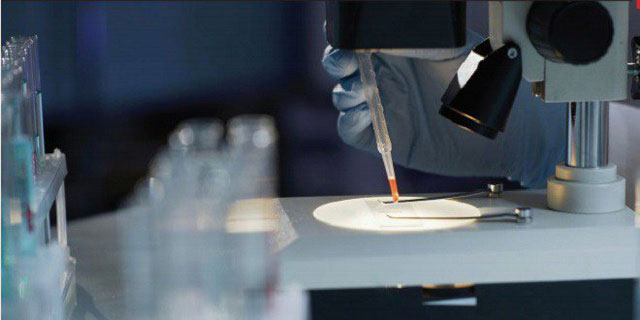
AIDS: Four vaccines reach highest level of testing ever
Kampala, Uganda | FLAVIA NASSAKA | HIV/AIDS prevention researchers at the Medical Researcher Council (MRC) are excited about two upcoming vaccine trials. The two trials; a PrepVac and a mosaic concept study will start in December and January 2019 respectively. The scientists hope that the studies might give the world the much awaited vaccine.
The PrepVac trial will involve up to 2800 participants and up to 100 people are already being followed by scientists at the MRC Uganda facility in Masaka. These potential participants were selected because they are at high risk of HIV infection. Their number will gradually be increased to 300 people for the first phase.
Dr. Freddie Mukasa Kibengo, an HIV Prevention Vaccines Researcher at MRC says they will be given Pre-Exposure Prophylaxis (PrEP) drugs as background and then be initiated on either normal saline as a placebo or the trial vaccine under the PrePVac trial.
The PrePVac trial is a Phase Two trial. It is exciting for the scientists because Uganda has not done a HIV vaccine study that has gone beyond Phase One although the country was the first in Africa to conduct an HIV prevention vaccine trial in 1994.
Phase One of a vaccine trial is basically to establish whether the contents of the trial vaccine are safe to be used in the human body. In Phase Two, participants are followed to see the effects of the vaccine.
“First we do laboratory tests on chemicals and when we see there’s a chance of it working we do early phase testing on mice and apes. If we see a bit of safety then we will go into humans,” says Kibengo who has been doing this for the last 10 years. He says testing and approving a vaccine for another phase is an important milestone because many ideas do not make it out of the laboratory.
At least four Phase Three other studies on HIV Vaccines are being done in Africa and Uganda will participate in one. The other three are being done in South Africa. The two countries are among the top five most HIV hit countries in the world with adult prevalence rates of 6.5% and 18.9% respectively.
Kibengo said the Mosaic Concept study that starts in January next year involves taking pieces of different viruses and sticking them together to generate immune responses that can cover a broad range of HIV subtypes.
The scientists are also employing the mosaic concept in these studies considering the fact that they need a vaccine that will kill different types of HIV.
There are up to 10 HIV subtypes called clades. While the prevailing strains in Uganda are predominantly clades A and D, South Africa has clade C and yet in Thailand where the studies were initially done has B and E. All this is put into account, if they are to come up with vaccine that will work for all not some.
Dr. Francis Kiweewa, the Head of Research and Scientific Affairs at Makerere Walter Reed Project, told The Independent that it is a big challenge because the scientists are working against a moving target.
“As you are searching here, the virus has changed and you will have to come up with new strategy. We can’t learn from the natural history of the infection. We have to always start afresh”.
“These studies will end in 2020 and 2021. That’s when we will know whether we will soon have a vaccine or not”.
The vaccine they are testing is not new but a modification of another trial done nine years ago in Thailand. The trial – RV144 according to Kiweewa had showed a 31% efficacy then but now, with the modifications, he says scientists are aiming initially for a 50%.
The trial, which tested a combination of two vaccines that had each initially failed on their own, involved over 16,000 HIV negative participants. At the end of three –year duration, 125 participants had become infected – 51 who had received the vaccine and 74 who had not.
Kiweewa said the new studies are based on three concepts; adding to that combination a protein adjuvant to enhance the body’s immune response, giving participants an initial dose, and (if it works) giving them a booster dose at 6, 12 and 18 months. These modification studies could not be done in Thailand because the epidemic there is abating.
The approach the scientists are using is also not new. Like all vaccines for other diseases, the purpose for this HIV prevention vaccine is to simply mimic an HIV infection and train the body to be able to fight this pseudo virus. Kibengo says they are using a model used many years ago when scientists were developing a tetanus vaccine. He said they inject broadly neutralizing antibodies into the body so that they can fight off infection.
An expensive venture
Vaccine research is an expensive venture right from when the idea is developed in the lab up to the time it is tested on humans. This, according to Kibengo, is partly why many ideas fail in the lab because there are no pharmaceuticals to fund them forward.
He however adds that even after 2021 if the results of current trials are negative, the scientists will have learnt what to adjust and what to drop. Kibengo says there is no question of stopping even after 20 years of fruitless searching.
But Sande Amakobe, a former Joint United Nations Programme on HIV/AIDS (UNAIDS) Uganda Country Director, had told The Independent in an earlier interview that while having a vaccine and cure would be nice, HIV/AIDS can still be defeated with the interventions currently available.
“We have all the tools we need today for people with HIV to live a full productive life. We also have all the tools to prevent infection including pre and post exposure prophylaxis,” she said.
Recent researches have showed pre- exposure prophylaxis (PreP) that involves giving HIV drugs to negative people at risk of infection can reduce one’s risk of infection by about 92%. Also, Post Exposure Prophylaxis (PEP) drugs given to a negative person within 72 hours of suspected infection can also reduce infection by over 70%. Also when a person adheres to their HIV treatments, the risk of infecting others is reduced by up to 90%.
But, researchers say this is not enough.
Brenda Okech, the Director of the International AIDs Vaccine Initiative Uganda, says the fact that studies are showing efficacy of 30% means having a vaccine is an achievable target. For her, efforts to prevent people from becoming infected have not been very successful even with aggressive awareness campaigns.
To understand why they keep pushing, Kiweewa says one has to look into history. For him no single epidemic – measles, polio and small pox that was a threat has been managed without a vaccine.
“I was around in the 80s when all they could do is to counsel patients so they can have a decent death, I was around when ARVs started to come and saw people take many times a day , now they take one a day. We have done studies showing with early enrollment on ART one can reduce infection rate by up to 96% but we are seeing just a 2.3% reduction in new infection. So, can we eliminate HIV without a vaccine? The answer is No”.
He says strategies that need continuous investment and application cannot be relied on to eradicate an infection the kind of HIV in a low resourced country like Uganda that cannot enroll everyone on treatment or even keep the few on ARVs getting their medicines sustainably.
Kenneth Mwehonge, an advocacy Officer with Coalition for Health Promotion and Social Development – HEPs Uganda a civil society organization, says while the country would be comfortable with the available avenues for prevention and control, the country is not so good at rolling out interventions. For instance, he says, while studies have okayed general use of PreP, it is still only used in controlled settings.
“A method like vaccination that is used once and for all would be the best option,” he says.
 The Independent Uganda: You get the Truth we Pay the Price
The Independent Uganda: You get the Truth we Pay the Price



AM HERBALIST DR OSE, I Cure Different Types Of Human Infections And Diseases Using Natural Roots And Herbs. I’m also a professional spell caster and my major areas of concentration are Sexually transmitted infections (STI), also referred to as sexually transmitted diseases (STD) e.g; herpes 1&2, HPV, diabetes 1&2, Hepatitis B, HIV and venereal diseases (VD) contact my website droseodiagbeherbalcenter.wordpress.com